Royal Navy (RN) Submarines
SSBN
Since the mid-1960s, Britain maintained a fleet of nuclear powered Ballistic Missile Submarines (SSBN) as a key element of her nuclear deterrent policy. Missiles were procured from the United States and it is assumed – there is always a high degree of secrecy regarding SSBNs – that their patrols were coordinated with the US Navy (USN). The only other NATO country with a submarine launched Ballistic Missile capability was France with their conventionally powered Redoubtable class SSBs, it is unlikely that the French patrols were coordinated with either the RN or the USN due to France’s severance from the NATO integrated military command.
The RN maintained a fleet of four SSBNs all based in Scotland near Glasgow; in 1994 the first of the new Vanguard class was in service and HMS Revenge had been retired, oddly Revenge was the newest of the Resolution class but was first to retire. With a fleet of four boats and an assumption that one would be in extended refit at any time thus leaving three to conduct patrols. Therefore, a reasonable deduction is that one boat was on patrol at all times, one in port at all times replenishing and routine maintenance, and the third would probably be on patrol or ready to go on patrol quickly. This link indicates that the average patrol length was three months, and that there were two crews for each boat, so the boat could be at sea for up to nine months a year with a month in port between each patrol.
We don’t know where the patrol areas are but if one deduces the targets and the range of the missiles, and takes a good look at the hiding spots in the sea, a rough area can be plotted. There must be some solid logic to the chosen areas because in 2009 two SSNBs, one French and one British collided. This incident tells us at least three things: 1) These boats are very quiet and hard to detect, even by each other; 2) The RN and the French Navy do not coordinate their patrol areas; and 3) The ideal area for a patrol was deduced by two navies independent of each other so it is probably predictable.
HMS Vanguard, S-28 is the first of her class and a quantum leap forward in technology to her predecessors. At 16000 tons, she displaces almost as much as an Invincible Class aircraft carrier, and is wider, deeper and 75% the length of that ship. With the advanced systems on board she has a crew of only 135. Northern Fury starts with this boat on patrol. HMS Victorious, second in the class has been launched but is 11 months from commissioning, even if rushed she would take at least six months to be ready.
The Vanguard carries 12 Trident II SLBM (Submarine Launched Ballistic Missiles), with up to 12 MIRVs (Multiple independently targetable re-entry vehicles). Under an agreement with the US, the UK designs and manufactures its own MIRVs, and these appear to be of varying nuclear yields. The range with a full load is ~4,200 nautical miles, or up to ~7,500 nautical miles with a reduced load, the exact ranges are classified.

HMS Vanguard
The three remaining boats in this class were all commissioned in 1967 or 1968, they are much smaller than the Vanguard class and with systems that were cutting edge when launched, but dated by 1994. In the mid ‘80s they were upgraded to Polaris A3TK SLBM with the Chevaline MIRV system. Each sub carried 16 Polaris missiles each with three MIRVs.
| Class | Pennant | Name | Status | Remarks |
|---|---|---|---|---|
| Resolution | S-22 | Resolution | In Port | 3 weeks until ready |
| S-23 | Repulse | In Refit | 4 months until ready | |
| S-26 | Renown | Transit to patrol | 2 days from station |
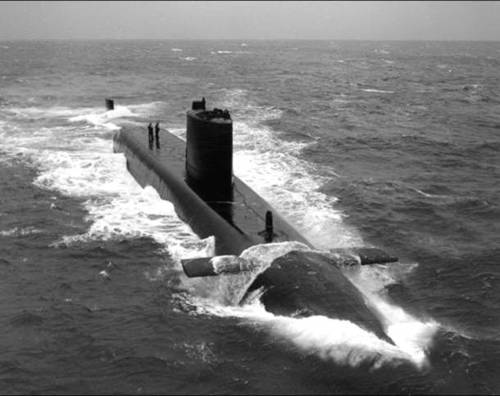
Resolution Class
Fleet Submarines (SSN)
These are the famous ‘Hunter-Killer’ subs, the work horses of the submarine fleet. The RN has 13 front line SSNs of the Trafalgar and Swiftsure classes and due to an updated threat assessment, has maintained five older boats of the Churchill and Valiant class beyond their forecasted retirement. Each of the older boats required a dry dock period of over a year and it’s estimated that this will add a decade to their service life, the last of them is still in dry-dock. Of the 18 boats, the RN keeps 12 at sea for 4-6 week patrols. Two are usually in the South Atlantic, two in the Mediterranean, two split between the Indian Ocean or Pacific, and six in the North Atlantic. All RN submarines have strengthened fins and retractable hydroplanes allowing them to surface through arctic ice.
Britain’s Fleet Submarines of the ‘80s and early ‘90s were plagued by the extremely unreliable Tigerfish torpedo. Early examples of this torpedo – Mod 0 experienced over a 60% failure rate. During the Falklands war, the Argentinian Ship General Belgrano was sunk using WW2 era unguided torpedoes instead of risking the use of a Tigerfish. By the mid ‘80s, the Mod 2 corrected many of the faults but it was still erratic – and worse, the submarine crews did not trust it. Cruise missiles were adopted in RN submarines for attacking surface targets because the Tigerfish was so unreliable! An urgent call for replacement resulted in the Spearfish torpedo, a much improved design entering service in 1992. Better guidance, faster computing and a 70 mile per hour attack speed make the Spearfish a much better choice. By the start of Northern Fury, most boats went on patrol with a mix of both types, a situation that will continue until production of the Spearfish ramps up.
The most modern Fleet boats in the RN, this class of seven were based in Plymouth. The newest, HMS Triumph was commissioned in late 1991. This class is extremely quiet, has excellent sonars and other sensors and is heavily armed with over 30 weapons, a mix of Tomahawk cruise missiles and torpedoes.
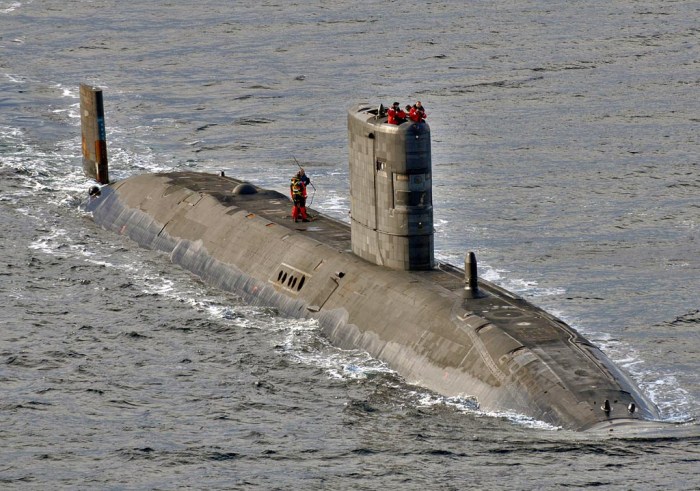
HMS Trafalgar
The six boats of this class were considered 2nd Generation SSNs with a much improved hull design, but fewer weapons and the same sonar setup as the previous Valiant class. Historically Swiftsure herself was retired early due to cracks being discovered in her reactor while being refitted, in Northern Fury these were repaired and she was brought back into service after six additional months in dry-dock.
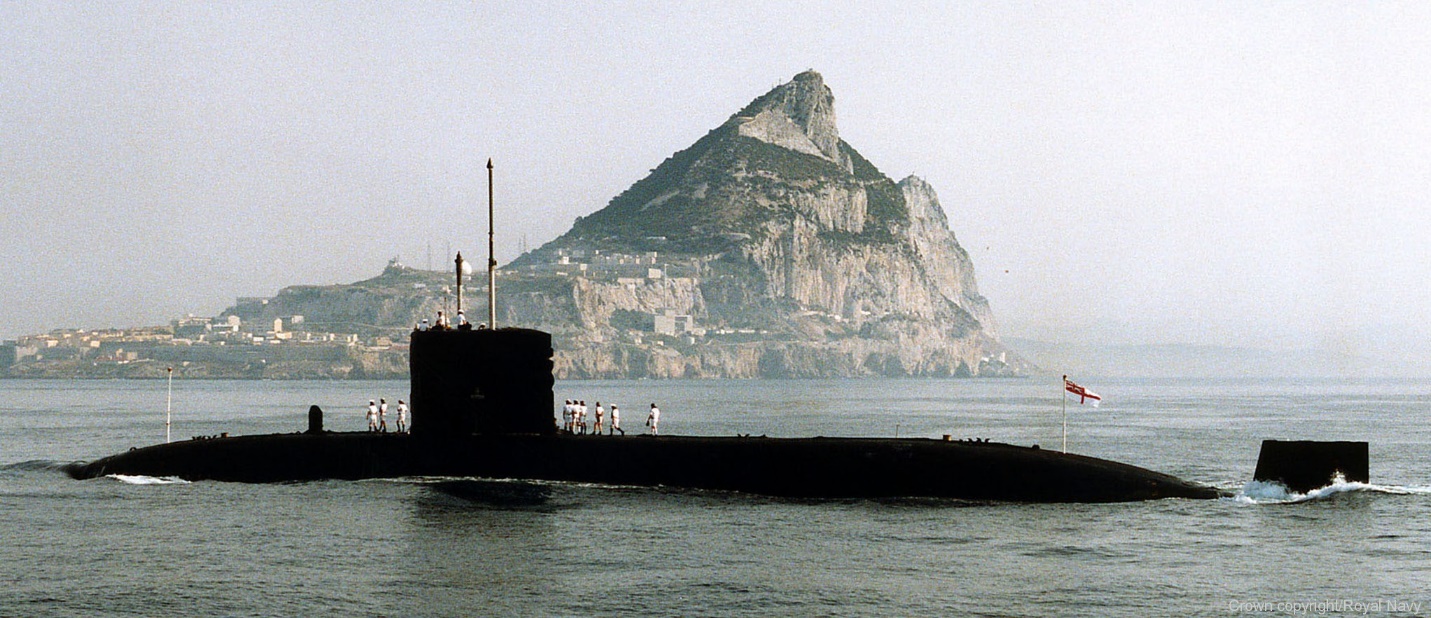
HMS Superb
Often considered an Improved Valiant class with many minor modifications. The three boats of this class served from the early ‘70’s and were due for retirement after only 20 years at sea due to the end of the Cold War. In Northern Fury, all three boats in this have undergone a mid-life refit and are expected to serve for at least another decade. HMS Conqueror gained international fame during the Falklands war by sinking the Argentinian Cruiser General Belgrano.

The two boats of this class were the first fully British SSNs. The one predecessor HMS Dreadnought had used an American reactor and was retired in 1980. These two boats had a long and active career, achieving many ‘firsts’ for the RN. They were 10 years older than the follow on Churchill class so a life extension was much more contentious and complicated, HMS Warspite is sill in dry-dock after a year of refit, and it will likely be several more months before she is fit to sail again. HMS Valiant, historically retired in August of 1994 and she may still due so because of the problems Warspite is having, she is scheduled to begin refitting in October 1994.
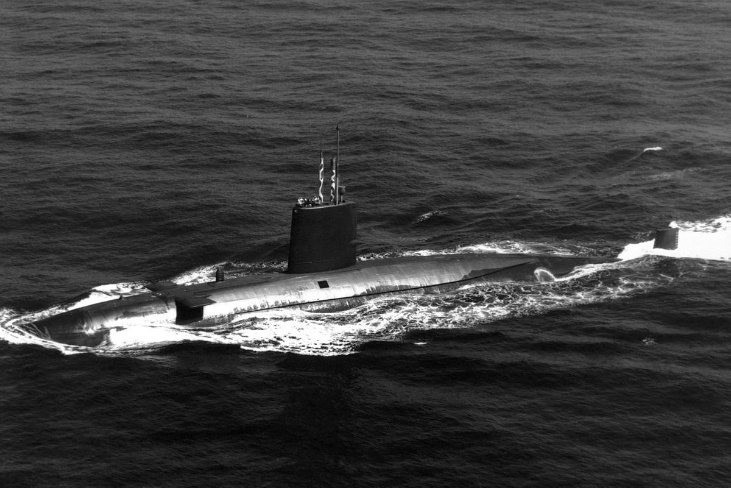
| Class | Pennant | Name | Location | Remarks |
|---|---|---|---|---|
| Trafalgar | S107 | Trafalgar | North Cape | X-Ray Station |
| S87 | Turbulent | North Sea | Patrol off Iceland | |
| S88 | Tireless | South Atlantic | Patrol | |
| S90 | Torbay | Eastern Med | Patrol | |
| S91 | Trenchant | Western Indian Ocean | patrol | |
| S92 | Talent | North Sea | Patrol off Norway | |
| S93 | Triumph | Port Plymouth | ||
| Swiftsure | S126 | Swiftsure | Port Plymouth | |
| S108 | Sovereign | South Atlantic | Patrol | |
| S109 | Superb | Port Naples | Tied up 2 weeks | |
| S104 | Sceptre | West Atlantic | Patrol | |
| S105 | Spartan | Western Australia | Exercise with RAN | |
| S106 | Splendid | Port refit | 1 Month | |
| Churchill | S46 | Churchill | Arctic | Tracking Boomer |
| S48 | Conqueror | Transiting Med | Returning from Patrol | |
| S50 | Courageous | English Channel | Patrol | |
| Valiant | S102 | Valiant | Port Plymouth | |
| S103 | Warspite | Refit | Dry Dock |
Diesel Powered Submarines
The RN operate two types of Diesel-electric submarines. There are several advantages of these submarines over nuclear powered SSNs but the main disadvantages are speed, and the need to recharge the batteries to enable electric operation. Two key advantages are size, these boats are much smaller and therefore more maneuverable in restricted waters, and silence. Stealth in a submarine is fundamental to survivability and its ability to stalk its pray, Diesel-electric boats are much quieter than nuclear boats which must run cooling pumps to keep the reactors under control. The traditional classification for a ‘conventionally’ powered boat is ‘SS’, while many newer boats are classified as ‘SSK’, with the K indicating ‘Hunter-Killer’. Although these boats could travel long distances they spent most of their time patrolling in home waters, with half of them either at sea or ready to deploy on short notice.
Commissioned between 1990 and 1993, these four boats are state of the art when it comes to Diesel-electric submarines. They are ultra quiet, relatively fast with a submerged speed of 20 Knts, have an 8,000 nautical mile range and six torpedo tubes, all with a displacement of only 2500 tons and a crew of 50, less than half of an average SSN. The RN planned to build 12 of these boats to replace the aging Oberon boats, but the end of the Cold War saw the cancelation of these plans and the sale of the four boats to Canada in 1998. In Northern Fury, the next batch of four boats is now building with the third batch about to be ordered.
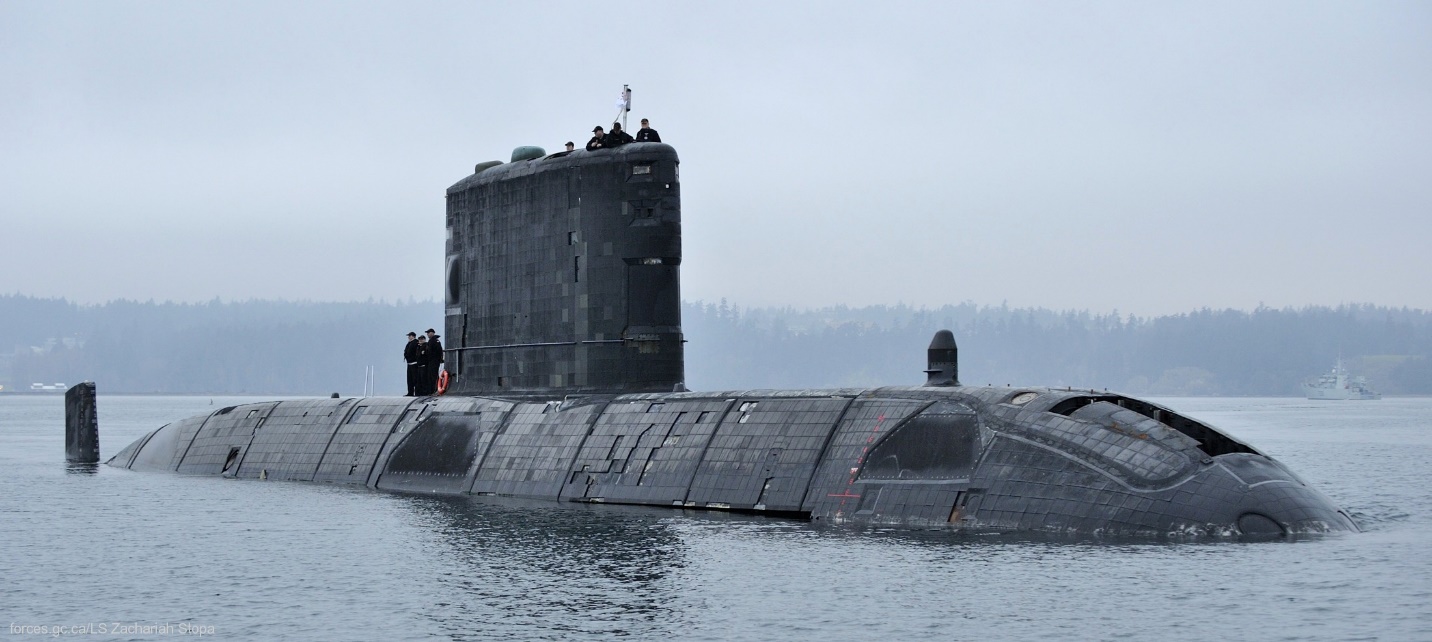
Upholder Class
There were 27 of this highly successful class of boat built for five navies, 13 for the RN between 1961 and 1963. Since 1986 however seven of the older boats were retired leaving six on active duty, slightly longer than the historic timeline. They are being replaced by the Upholder class. When these boats were launched they were considered the best of their type anywhere, and that distinction was maintained through upgrades over time. Technology and age however, was getting the better of them by the early 80’s and the replacement Upholders were ordered.
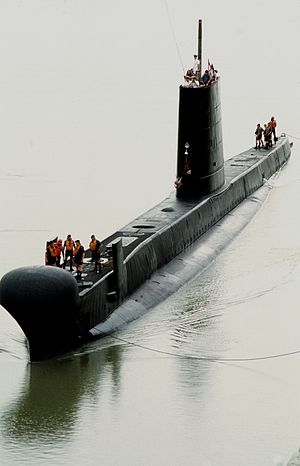
| Class | Pennant | Name | Location | Remarks |
|---|---|---|---|---|
| Upholder | S40 | Upholder | Scotland | Patrol |
| S41 | Unseen | Port | ||
| S42 | Ursula | Central Med | Port Visit to Athens | |
| S43 | Unicorn | Port | ||
| Oberon | S13 | Osiris | Port | |
| S15 | Otter | Western Approaches | Patrol | |
| S16 | Oracle | Port | Refit 3 weeks | |
| S17 | Ocelot | English Channel | Patrol | |
| S19 | Opossum | Port | ||
| S20 | Opportune | English Channel | Patrol |